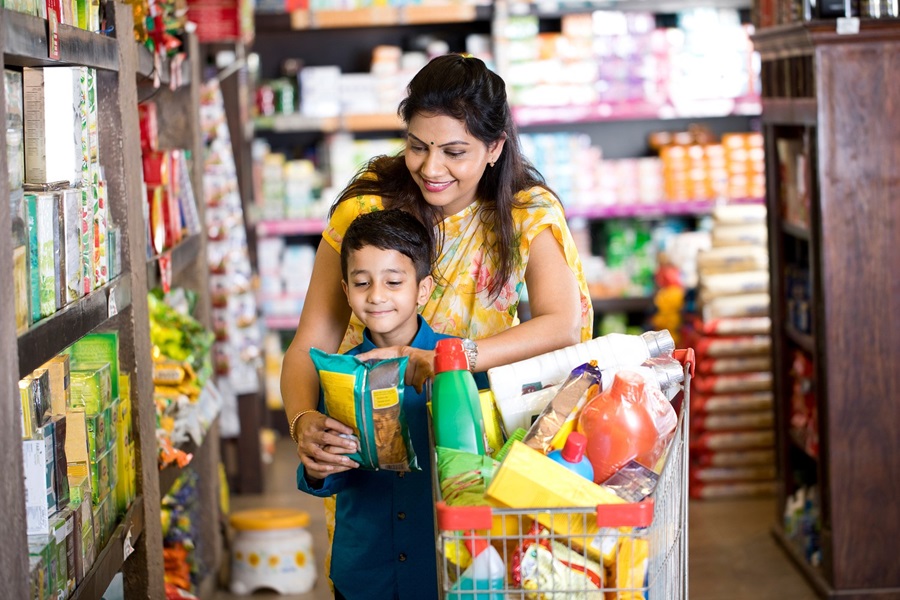Following a year in which India’s FMCG market failed to grow, all eyes were on a revival in 2023. At first glance, expectations seemed to be correct, with a rise of 6.1% in consumption over the year. However, this was entirely driven by one category: atta (wheat flour). Removing atta from the mix brought growth down to 2.7%, matching India’s population growth exactly; meaning that the increased volume was purely due to a larger population.
Consumption either declined or remained static in half of all the FMCG categories that Kantar tracks in India. The biggest drops were seen in cooking oils, followed by washing powders, basmati rice, and salt – all bulk purchase categories.
Holistic growth is proving rare. Only 14 categories are growing across all key parameters, which include per-household consumption, per-household spend, and penetration that is expanding faster than the population. These include instant coffee, insecticides, chocolates, biscuits and cookies.
There are also signs that consumers are downtrading in certain categories where value growth is slower compared to volume growth: hand wash, body wash, shampoos, floor cleaners and cooking oils.
Food beats beverages
FMCG spend increased by 8.5% over 2023, higher than the average inflation rate of 5.7% for the year. Delving deeper into spending patterns reveals that the bulk of the increase in expenditure stemmed from food categories, rather than beverages. Biscuits grew most substantially, followed closely by salty snacks, ice cream, and chocolates. This shift highlights consumers' inclination towards indulgent and convenient snacking options.
The Indian beauty and personal care industry is also experiencing a surge, growing in value by 15% in 2023 with soaps, deodorants, hair wash and hair colours the star performers. However, the hair care segment still has significant room for growth.
The effect of enhanced mobility
The further relaxation of COVID restrictions in 2023 led to Indian consumers making an average of 14 extra trips compared to the previous year. The number of out-of-home (OOH) occasions stood at 43; a surge of nearly 50% over the year.
Increased trips resulted in a notable uptick in pack purchases, with a staggering 81 more packs bought on an average – twice as many as in 2022. Again, there is evidence of heightened engagement with indulgent snacking categories.
South India was a focal point of growth, with the total number of shopping trips nearly doubling compared to 2022, in tandem with a huge 185% increase in pack purchases. This indicates increased purchasing power and consumer confidence.
So, what’s in store for 2024?
This is an election year in India – but the event is not expected to have a great impact on FMCG. Past election years did not motivate any surge in consumption; on the contrary, all the ‘freebies’ households received led to stagnation or shrinkage.
If the summer is a hot one once again, this might lift categories like bottled soft drinks, ice creams and sun screens. However, the combined growth is likely to have a negligible impact on overall FMCG.
Fill in the form below to download the latest report on India's FMCG market. Experiencing some issues? Click here.

